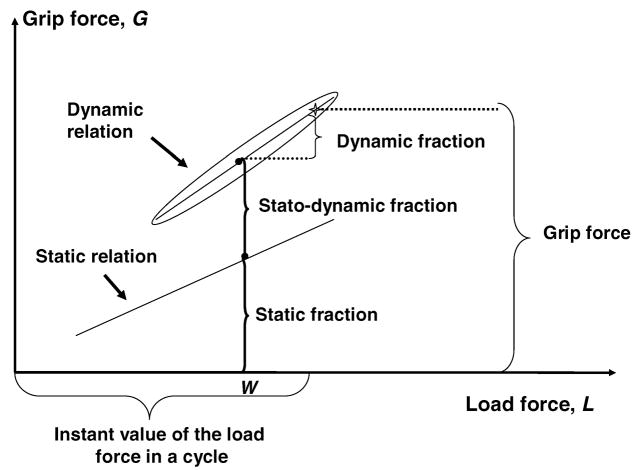Figure 16.
Expanding the grasp force into the three fractions, a schematic. In the experiment, the subjects oscillated the object in the vertical direction. In the figure, an instant value of the grasp force is represented as the sum of the static, stato-dynamic and dynamic fractions. W is the object weight. The static relation is represented by a straight line. To obtain the static relation the subjects held at rest objects of different weight. The dynamic relation is represented by an ellipse. The relation is a grasp force-load force plot recorded in a single trial. (Reprinted by permission from V.M. Zatsiorsky, F. Gao, and M.L. Latash. Motor control goes beyond physics: differential effects of gravity and inertia on finger forces during manipulation of hand-held objects. Experimental Brain Research. 2005, 162: 300–308).

